Artichokes are one of the most exciting and intense vegetables in flavour. They originate from the Mediterranean region and Italy is their largest growing area worldwide. They come in many different varieties, ripening in different sizes at different times of the year.
There are countless ways to turn artichokes into delicious dishes. Unfortunately, it is their somewhat complicated handling that prevents many people from doing so and thus, while many have bought pickled artichoke bottoms in a jar or found them on a pizza, they have not actually laid their hands on the plant itself.
It is winter and that is the time for the Italian variety “Mamme”, a rather large plant with reddish leaves. We bought four of them for two people and opt for a rarely encountered pasta dish, namely “Pasta Carciofi, Funghi e Patate” – a great combination of flavours that we strongly recommend.
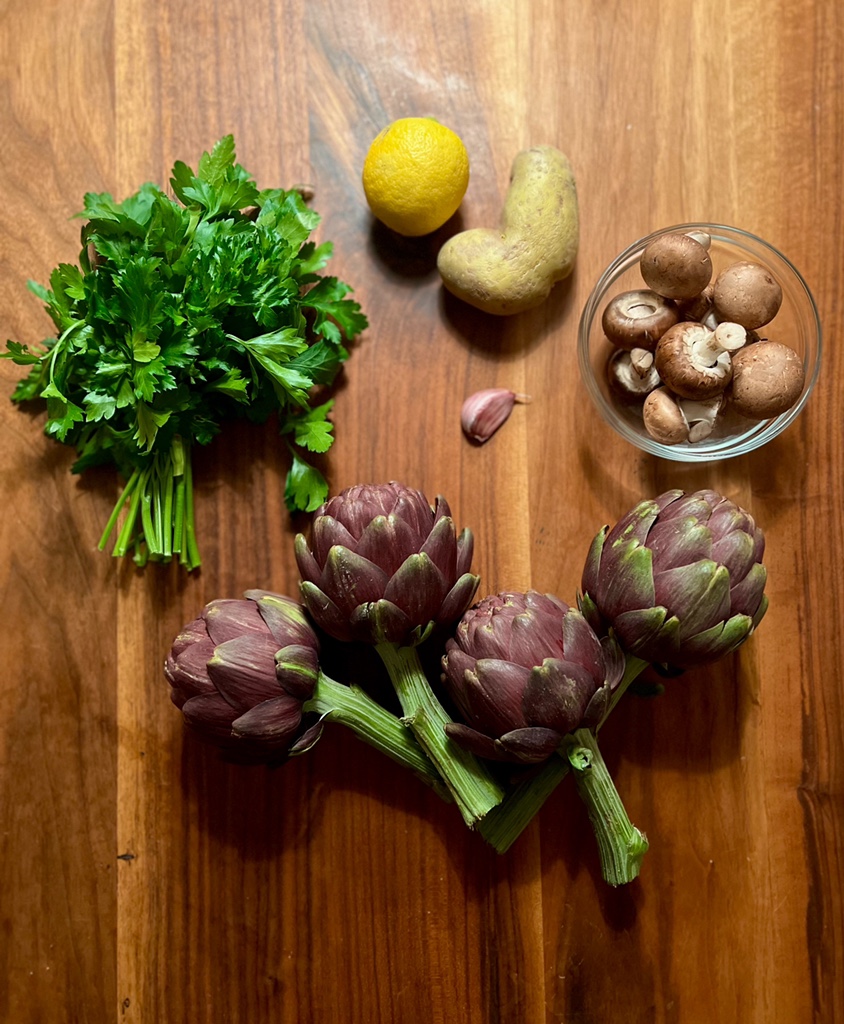
When buying artichokes, make sure that the bud is rather firm and closed. The stem should be firm as well. It is best to process the artichoke on the same day, but it can also be stored in the vegetable compartment of the fridge for a few days.
We peel a medium-sized potato, cut it into equal-sized cubes and boil them in salted water for about 20 – 25 minutes until almost cooked.
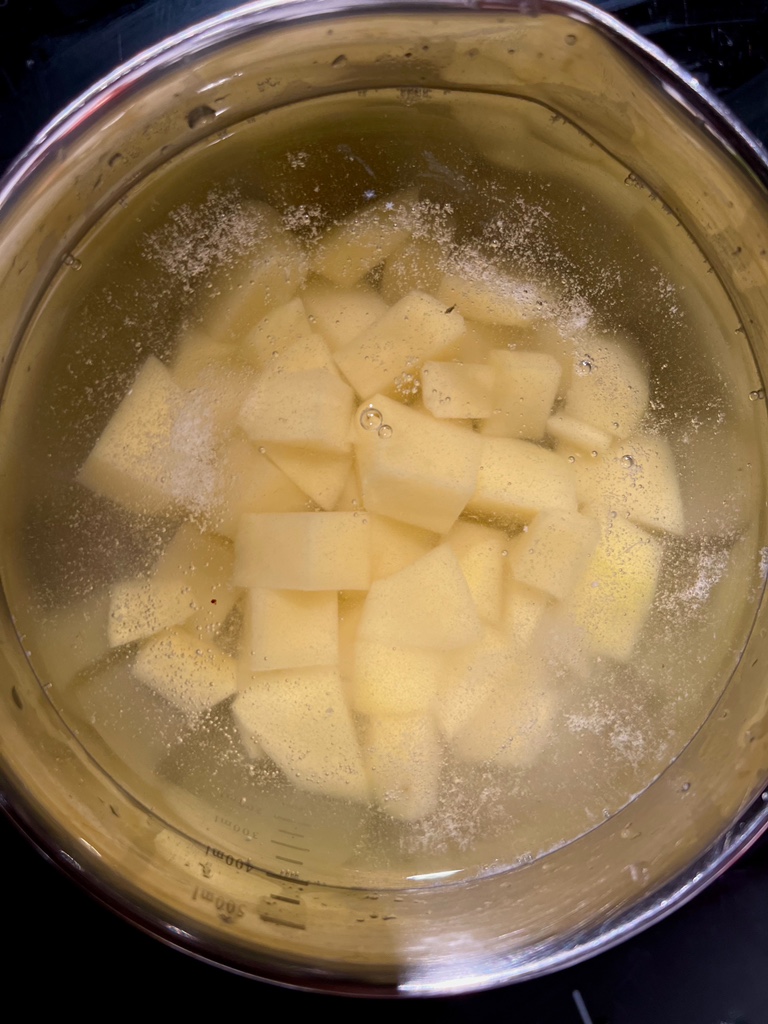
Before you turn to the artichokes, prepare a large bowl of cold water and squeeze the juice of a lemon into it. Artichokes oxidise extremely quickly and the edible parts must therefore be placed immediately in the acidic liquid, otherwise they will discolour and become less enjoyable.
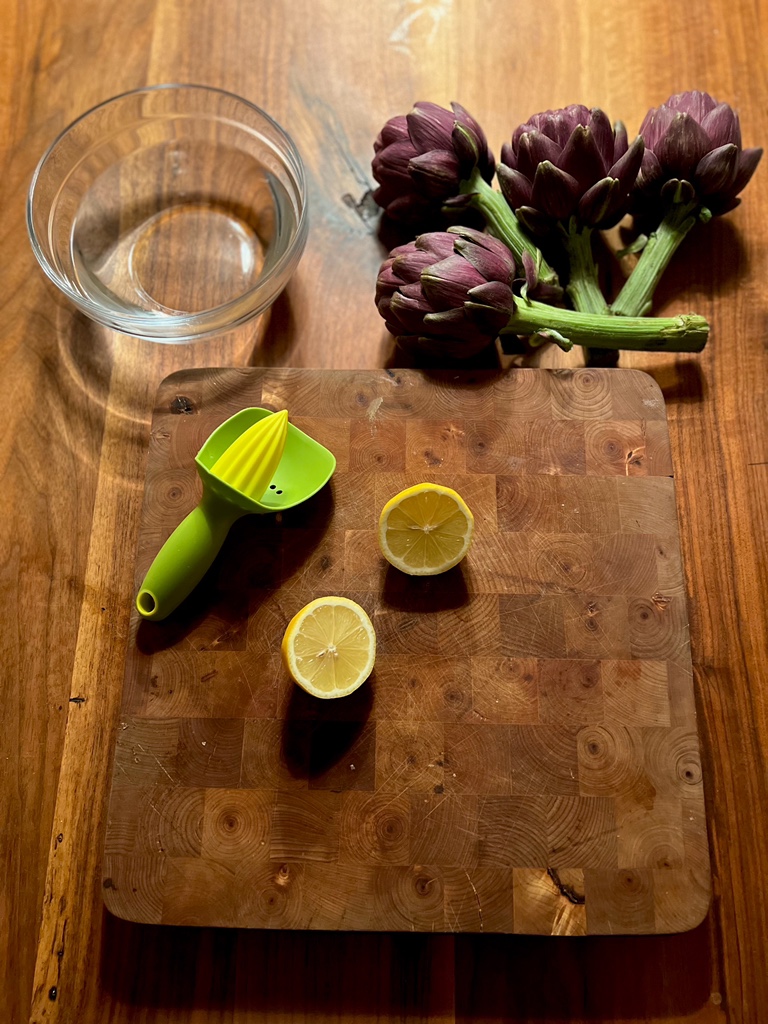
Important: Contrary to what you see in many recipes, you should only squeeze the juice of the lemon into the water and not also add the zest of the lemon, because otherwise undesirable bitter substances can dissolve from it and pass into the already bitterly artichoke.
You also need two knives, a large serrated knife with which you would cut bread, for example, and a small vegetable knife for the fine work.
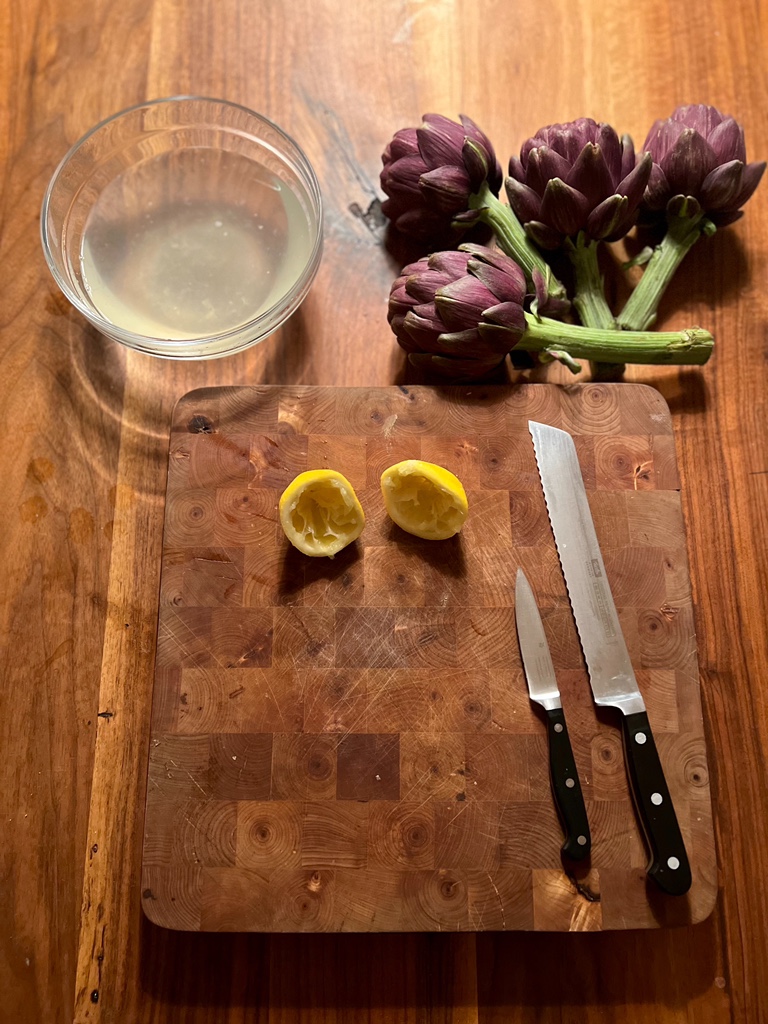
First hold the bud flat on the tabletop with one hand so that the stem protrudes over the edge of the table. Now press down hard on the stem to break it off. This way you pull any inedible fibres out of the bottom of the bud together with the stem, which you won’t be able to do if you cut the stem off.
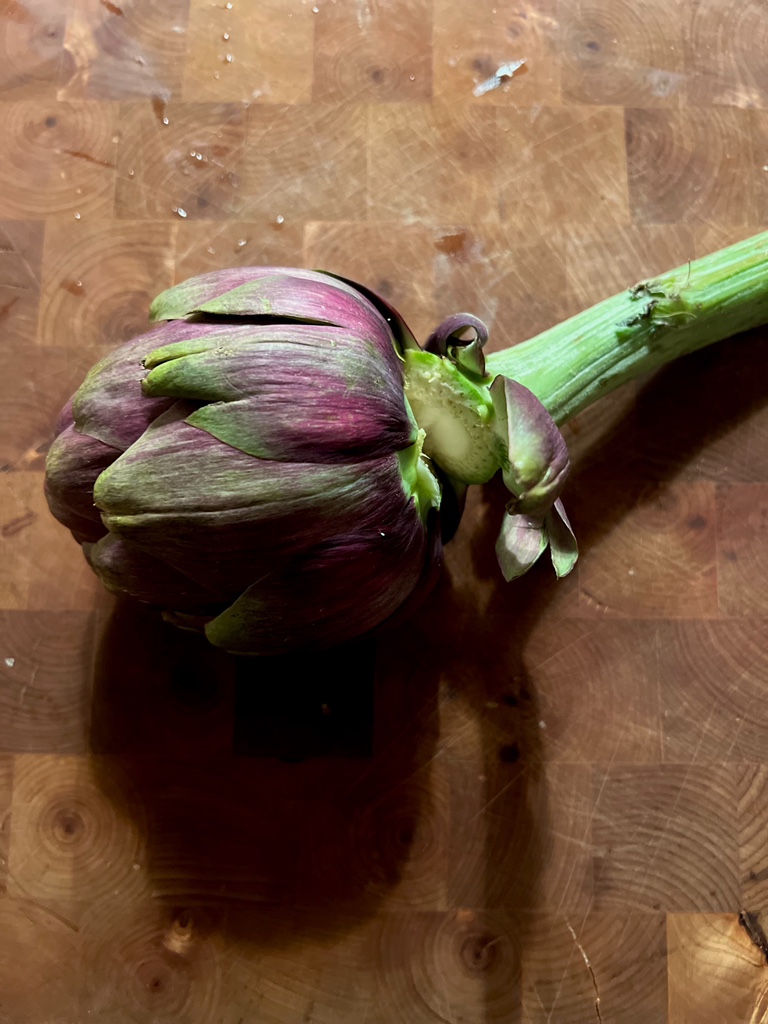
The stems are not thrown away, their white core (if any) is particularly delicious and also processed.
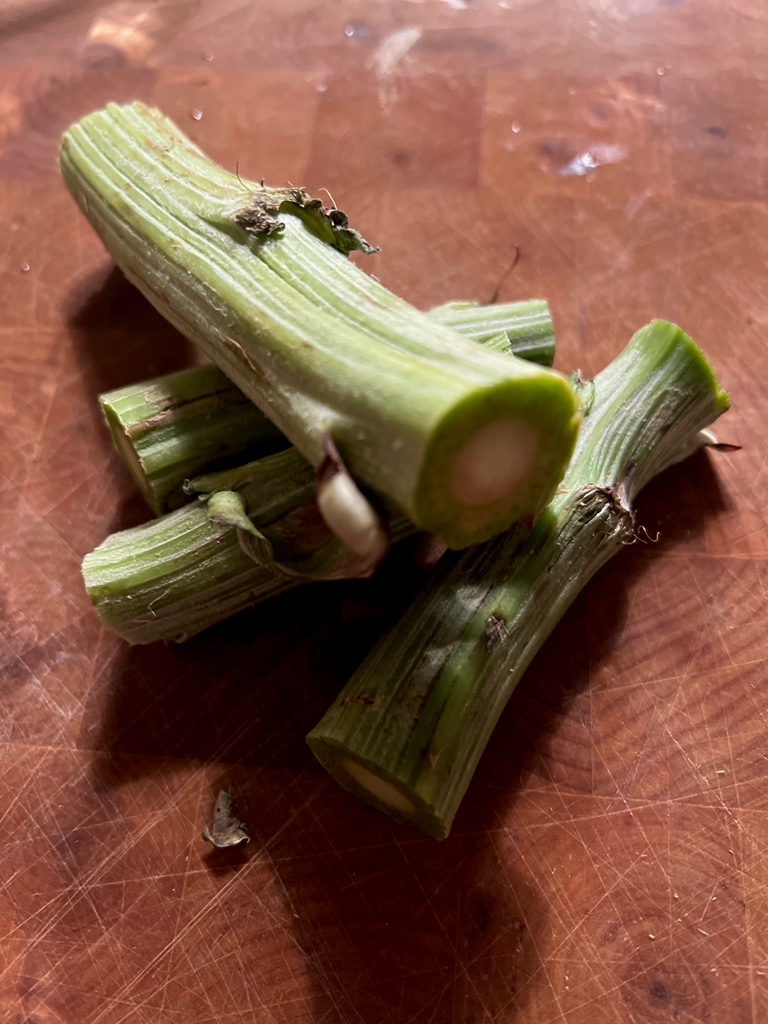
With the small knife we cut off the ends of the stems and then peel all the green from them. Only what is white can be eaten. We cut this peeled core into pieces and immediately put them into our lemon water.
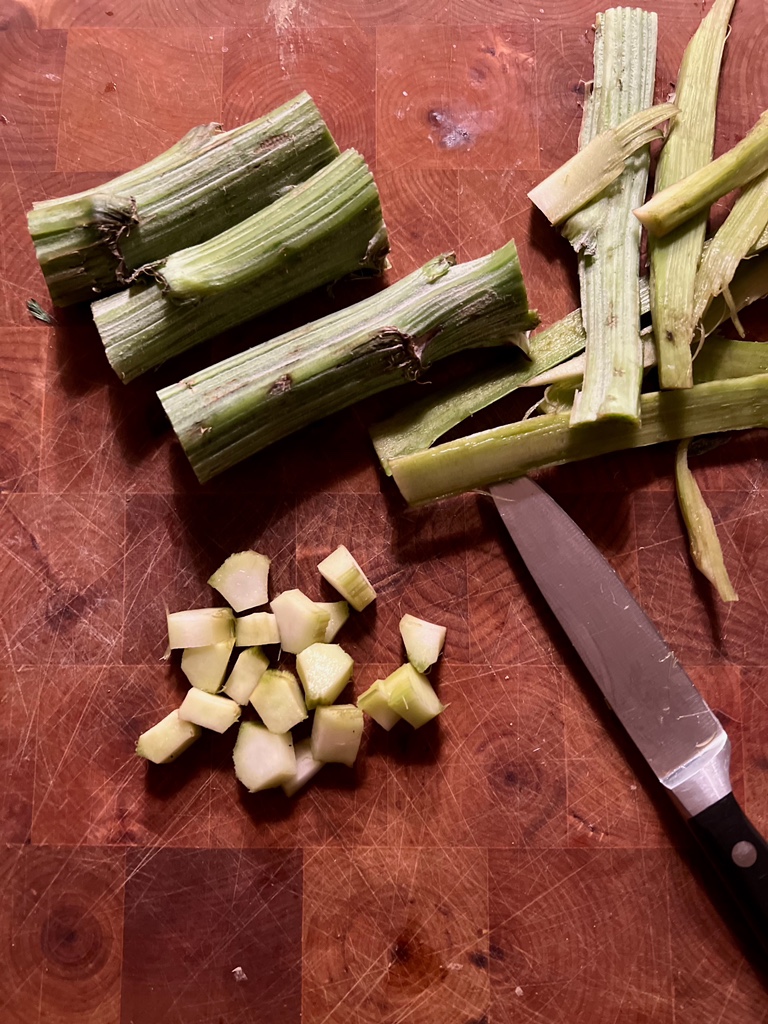
Now for the bud. Put it on your board and cut off the leaves all around the thicker, lower end with the serrated knife. If you have never done this before, go slowly. Cut off row after row of leaves, turning the bud on its axis and getting closer and closer to the white flesh, the so-called bottom. Lay it bare in a circular pattern.
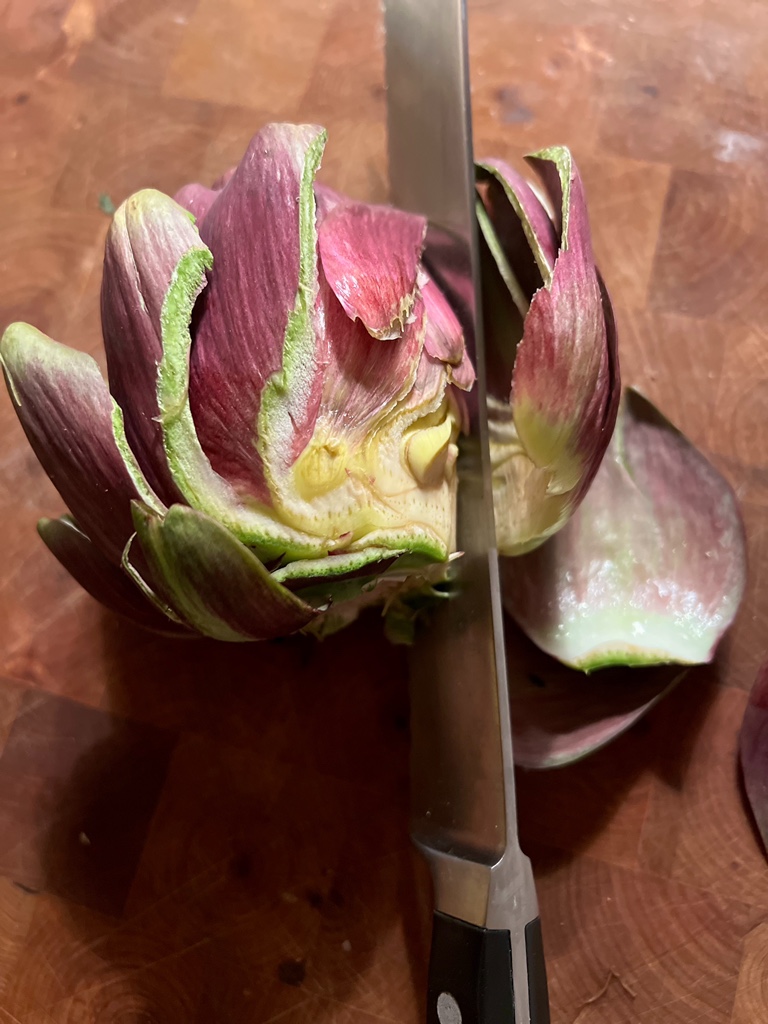
In the end it looks something like this – although of course each crop and each variety can appear slightly different:
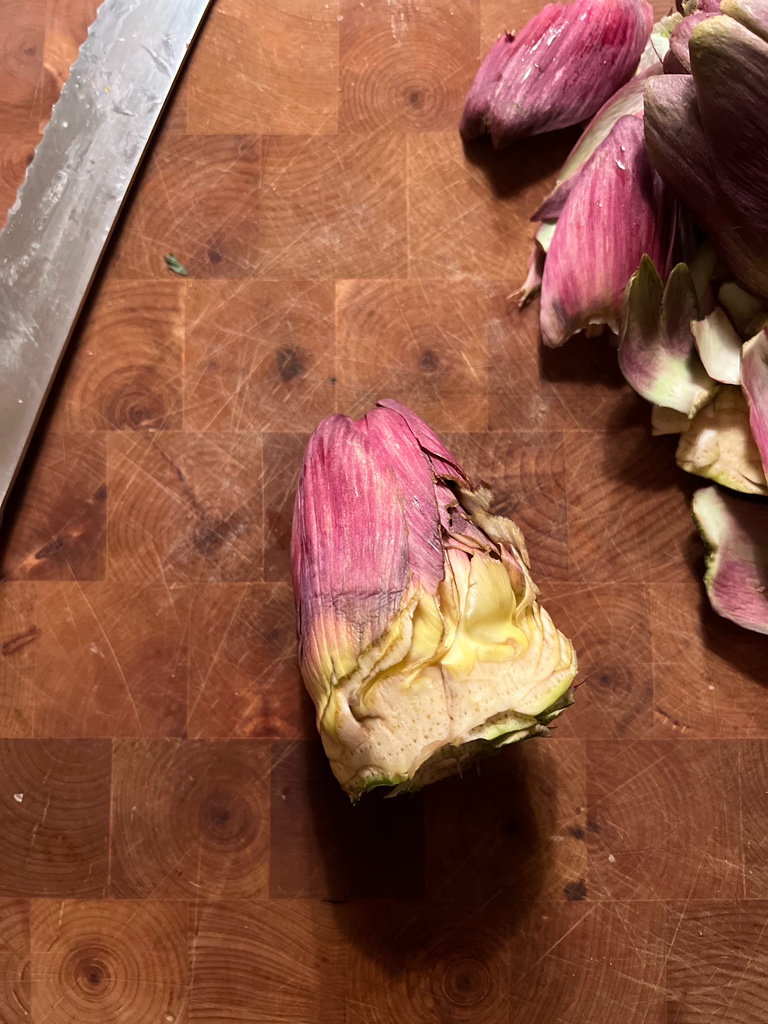
Now we cut off the upper third of the remaining, finer leaves.
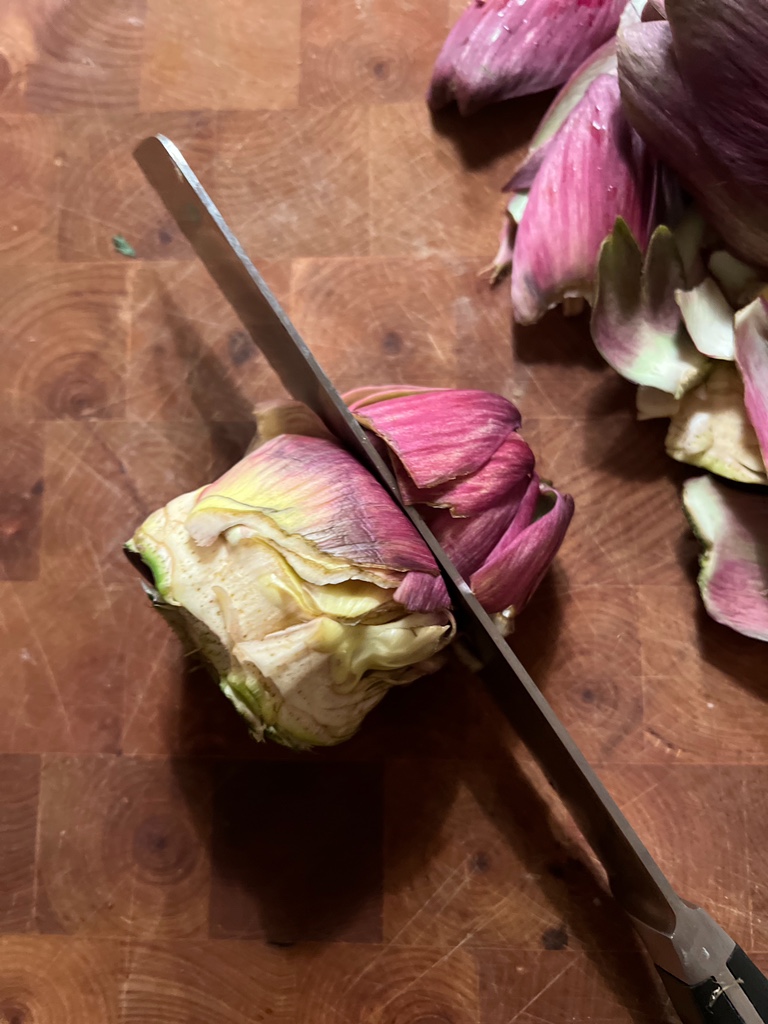
Now carefully cut off anything green or wooden from the bottom with the small knife all around. This trimming of vegetables is called turning, because you rotate the vegetables in a circle in one hand while the other one guides the knife.
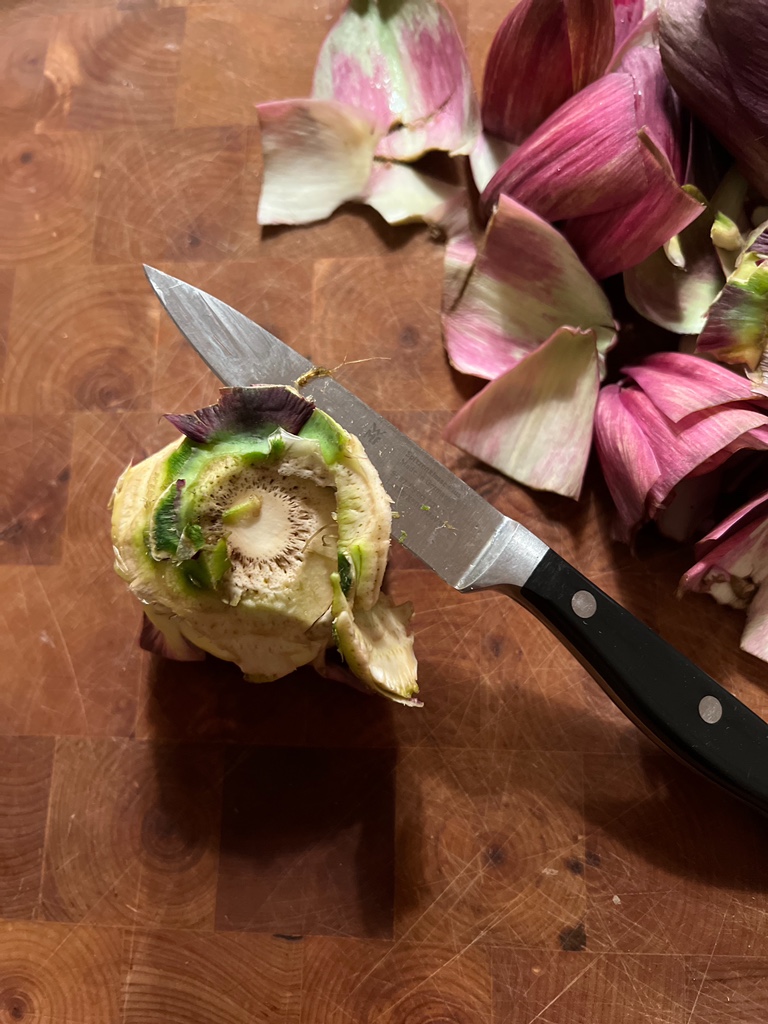
There are, depending on the dish, different ways to process this inside of the artichoke and we will introduce them all in the course of time. For our pasta, we cut the bottom in half.
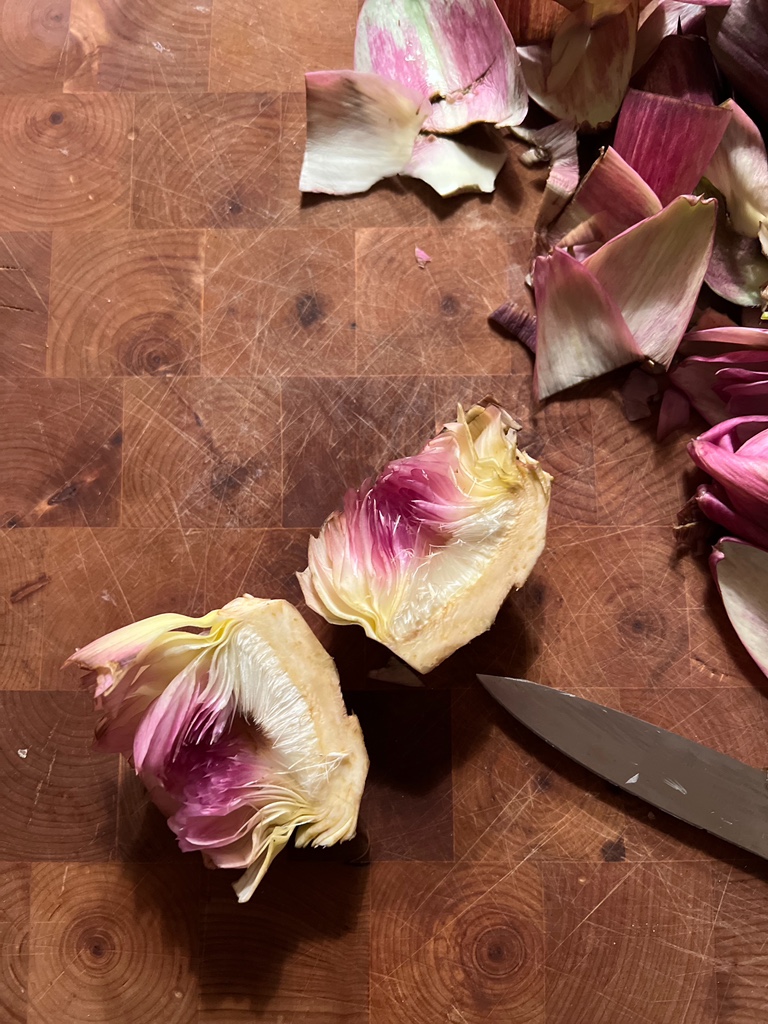
In the middle you will see white, fine fibres sticking up from the bottom like hairs, they are called hay. You must also remove this hay, it is not edible. You can easily scrape out the fibres with the tip of the small knife.
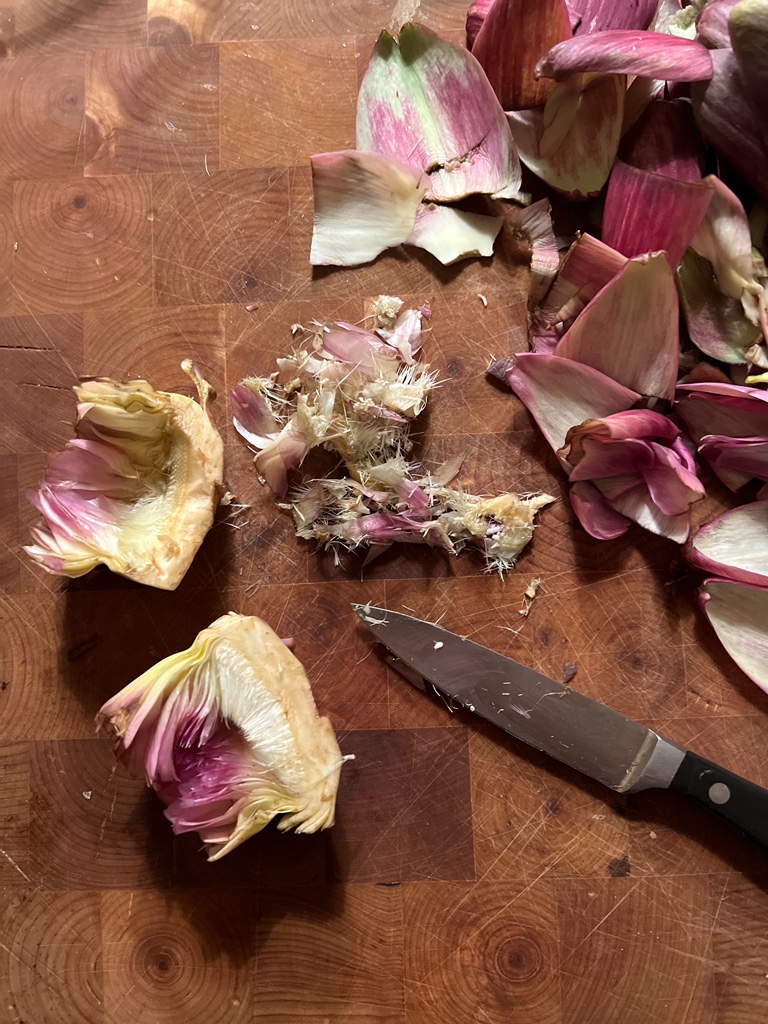
We immediately put the now perfectly prepared halves of the bottom into the lemon water.

Yes, it is a bit of work, but once you did it, it is very easy afterwards. So don’t be put off, it is worth it.
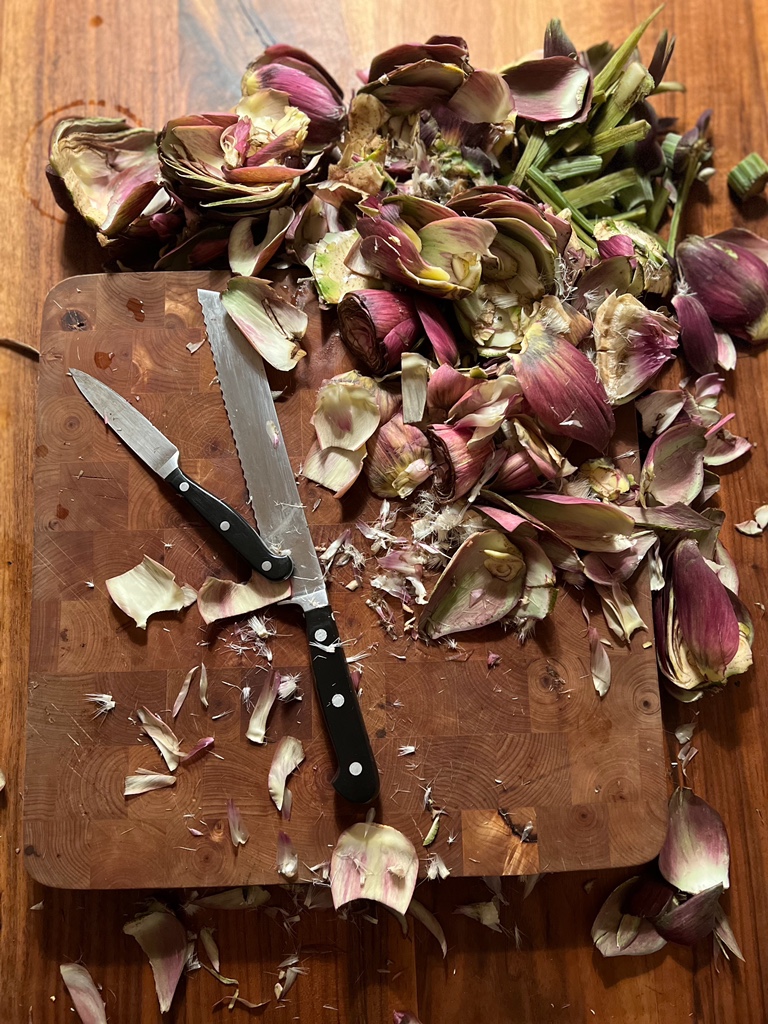
We slice a handful of mushrooms per person.
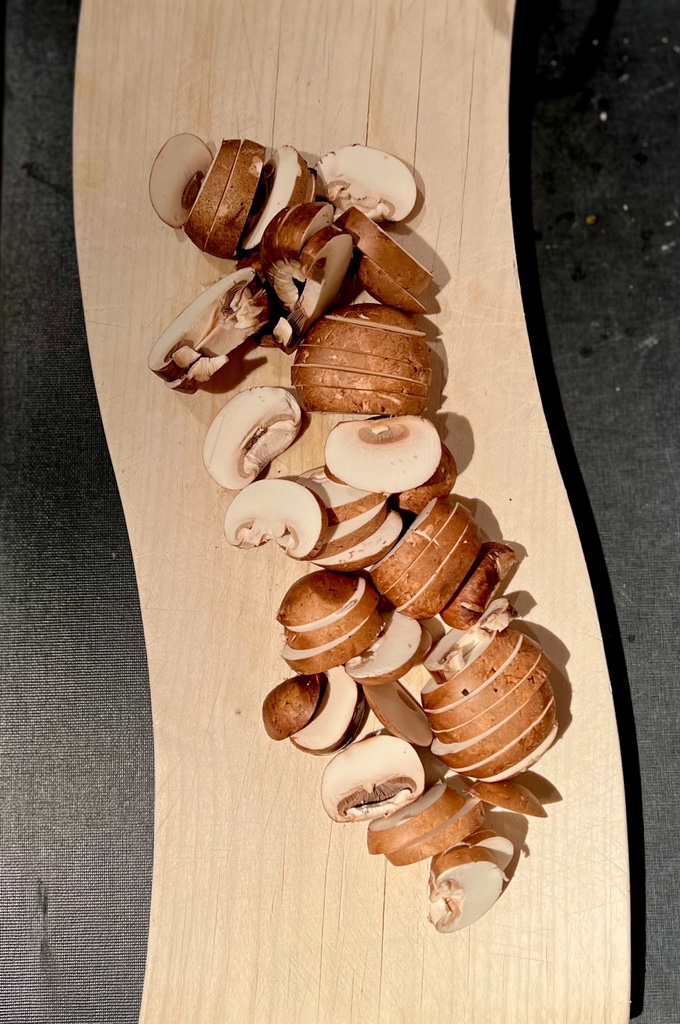
Now it’s time to get to the stove. Put your pasta water on, because by the time it boils and the pasta is cooked, the vegetables are ready, too.
In a non-stick pan, heat olive oil and a little butter (if you want to eat vegan, just skip it). Add a clove of crushed garlic and a pod of pepperoncino. Remove both before adding the pasta. Finely chopped onion is an option at this point alongside or instead of garlic.
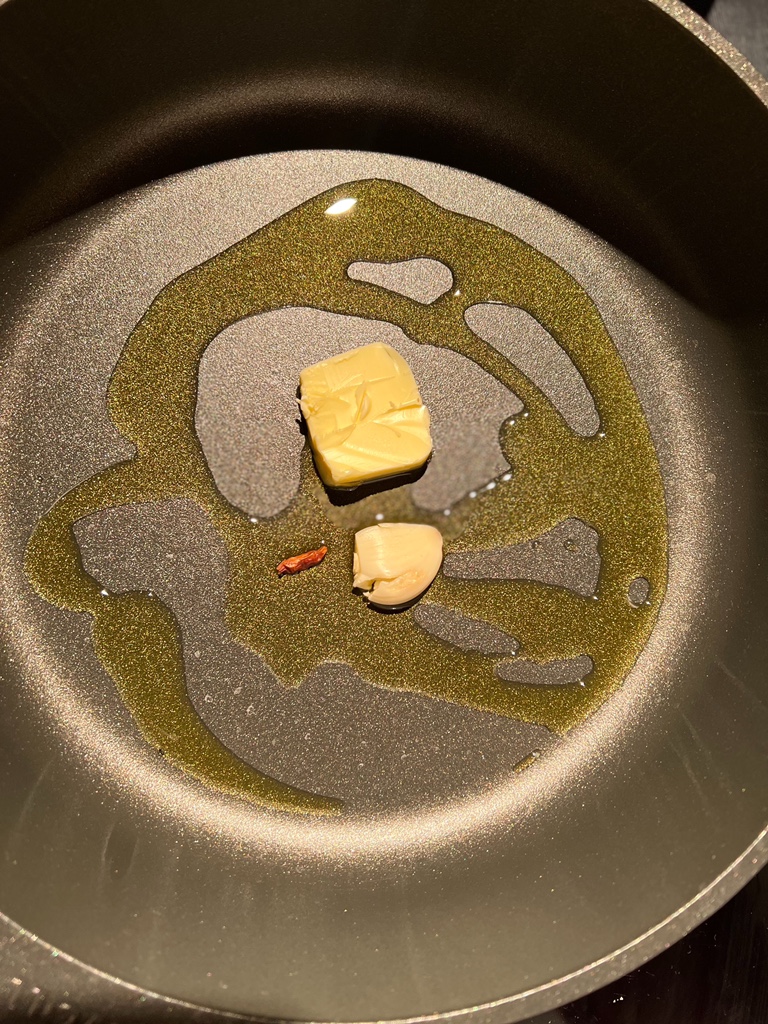
Now we add our pre-cooked potato cubes, the mushrooms and the sliced artichokes to the pan and sweat everything on medium-high heat for 4 – 5 minutes so that the flavours develop.
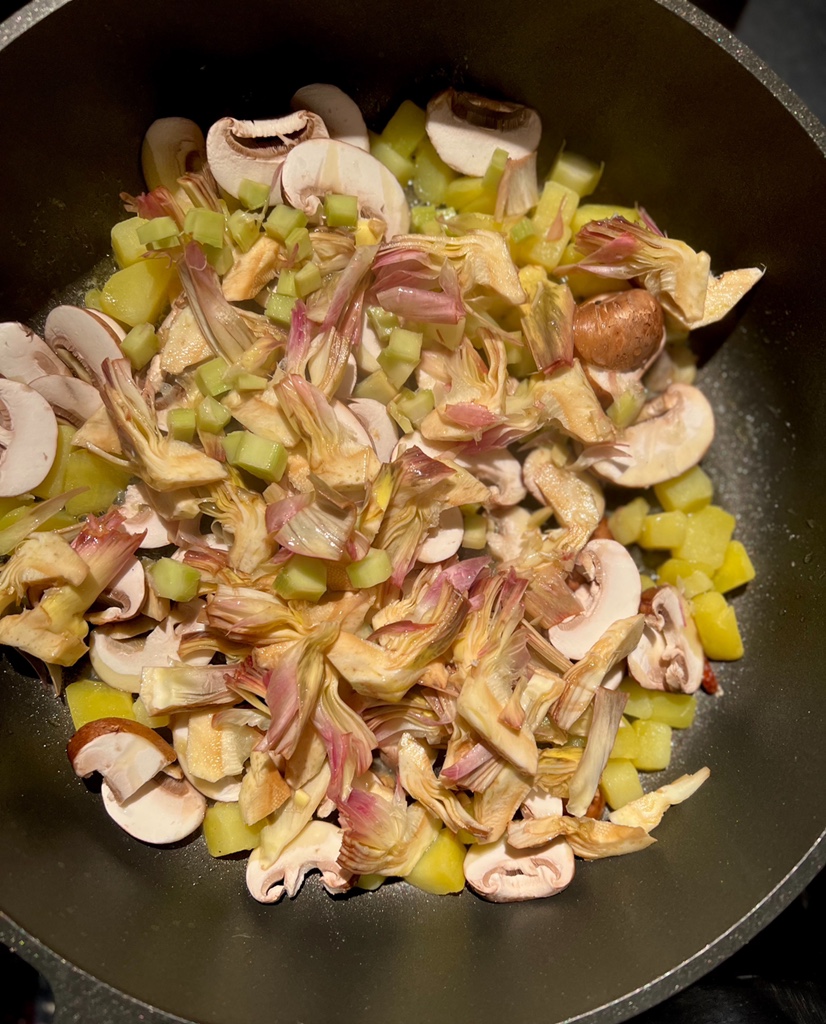
Then season with black pepper from the mill and salt.
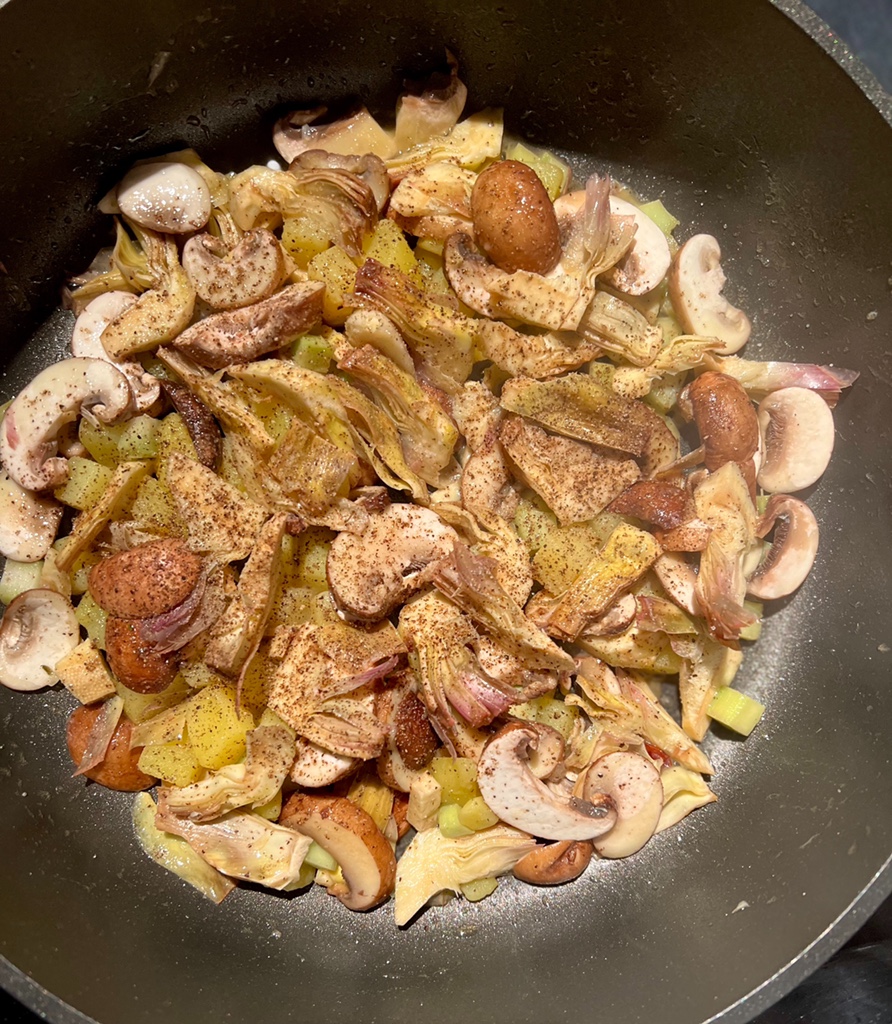
Stir gently and then simmer on low heat with the lid on so that the flavours concentrate. If you feel that the vegetables need a little more liquid, add a little of the cooking water from the pasta. The artichokes should be cooked al dente, but not too soft and should definitely keep their shape. We like to add a dash of white wine at this point.
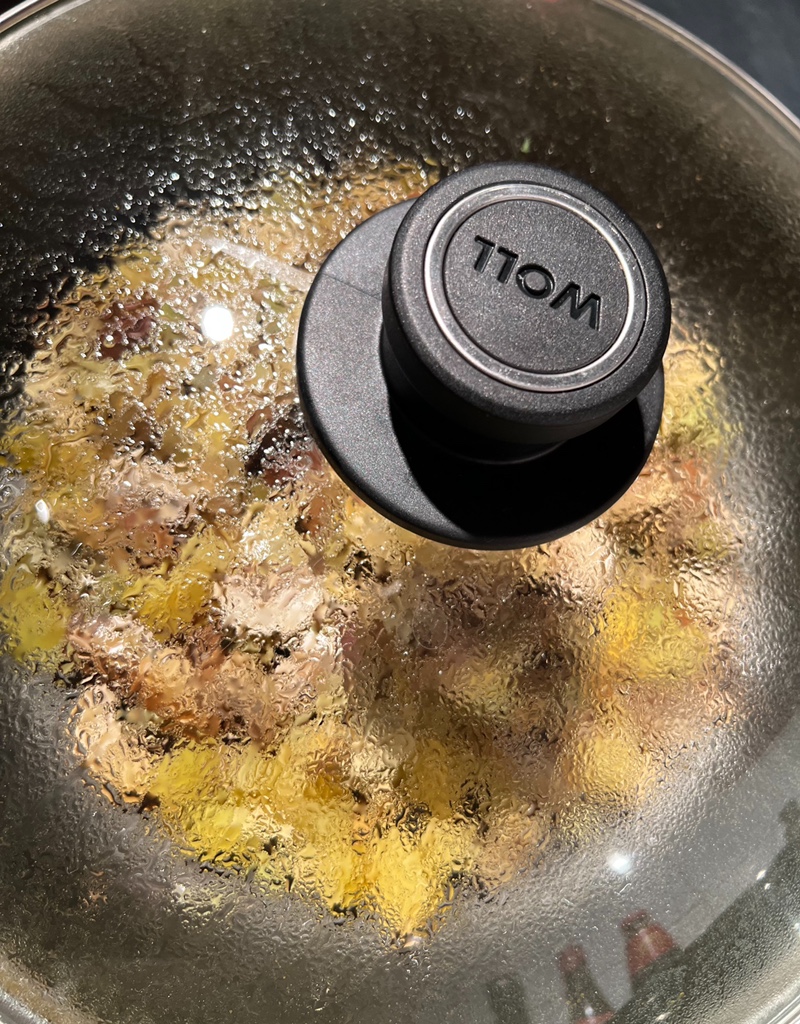
When the pasta is cooked, add grated Parmigiano and chopped parsley to the pan.
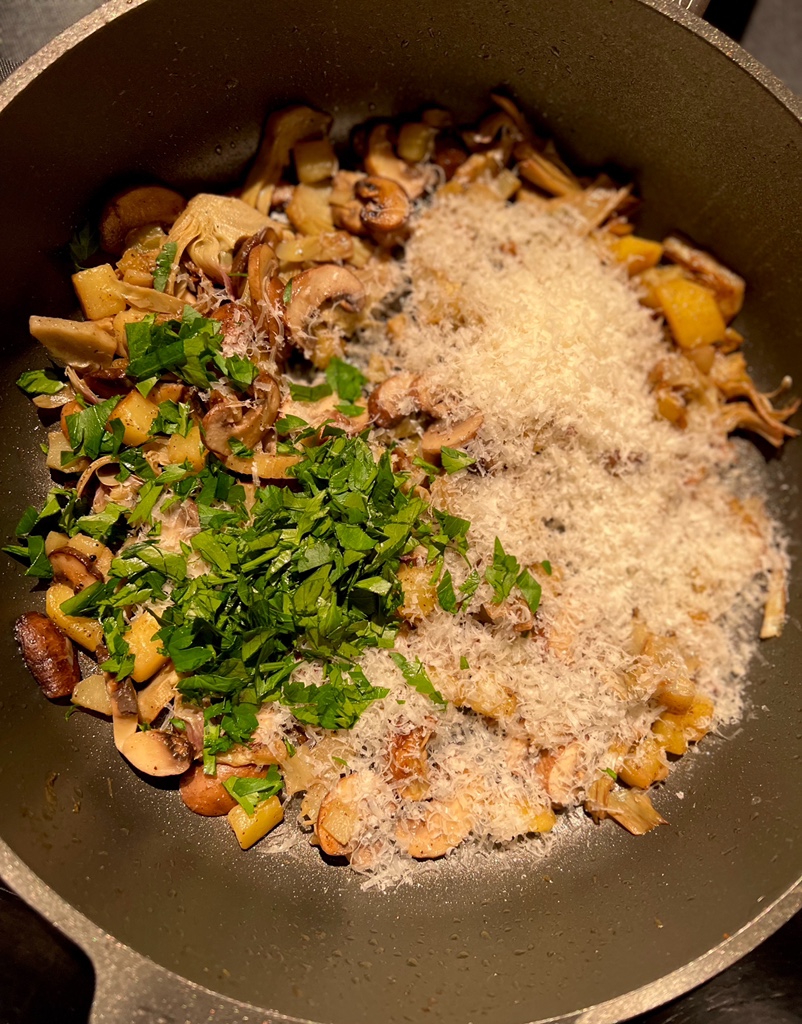
Now the pasta is added and, if necessary, a little more of its cooking water is blended in to create a delicate sauce that coats the pasta. Find out how that is done and what ‘mantecatura’ means here.
This extraordinary pasta really showcases the unique taste of artichokes.

Enjoy.
And may the taste be with you.
Ingredients (for 2 people):
4 artichokes
1 lemon
1 medium potato
200 g mushrooms
2 tbsp olive oil and (optional) 2 tbsp butter
1 clove of garlic and/or 1 small onion
1 dried chili pepper
240 g pasta, a short variety (we use casarecce)
Optional: 0.1 l white wine
100 – 150 g Parmigiano Reggiano
A little parsley
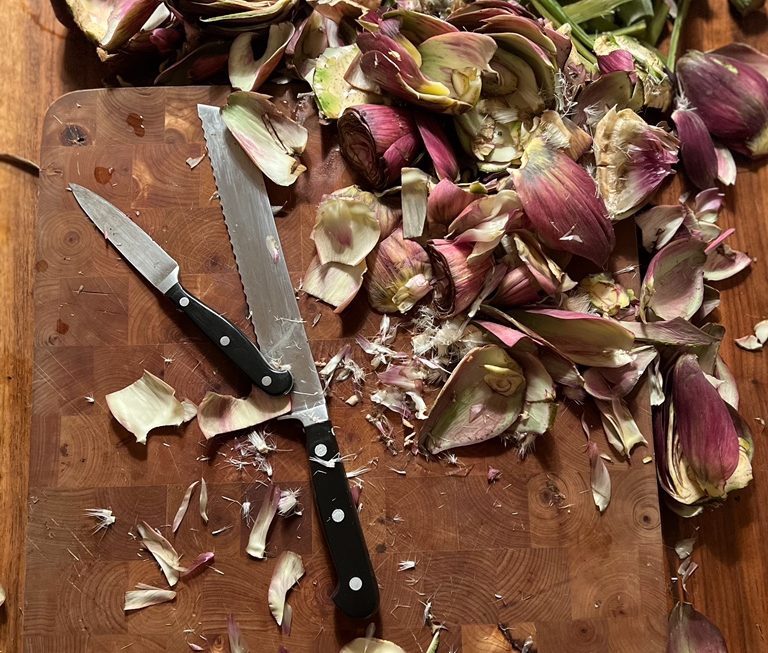
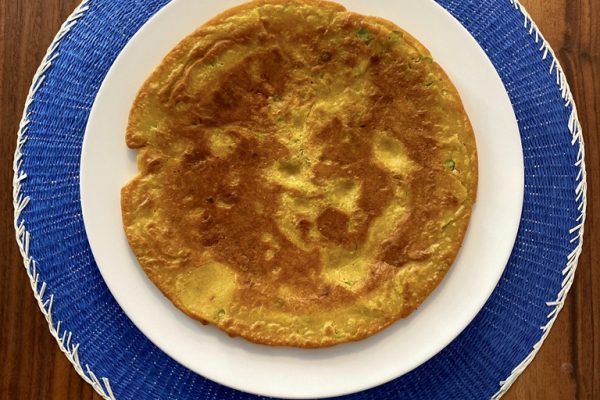
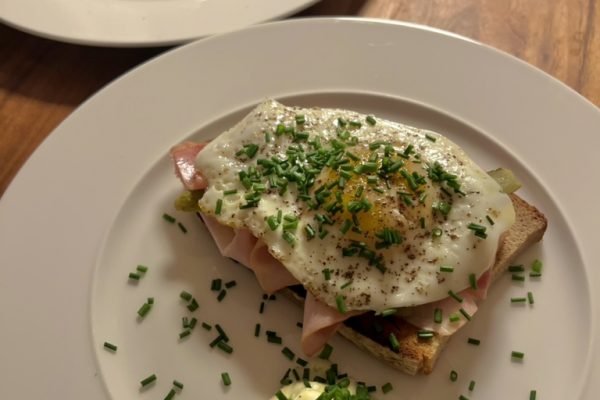
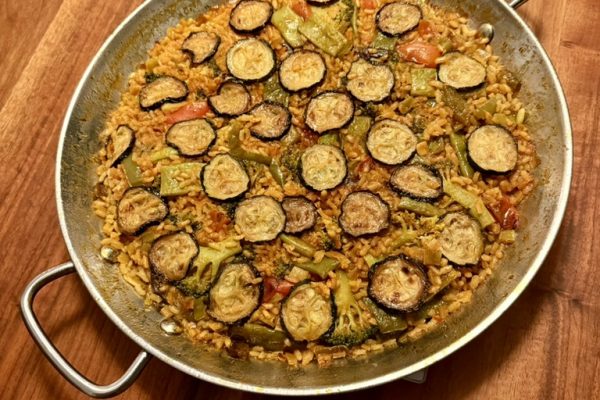
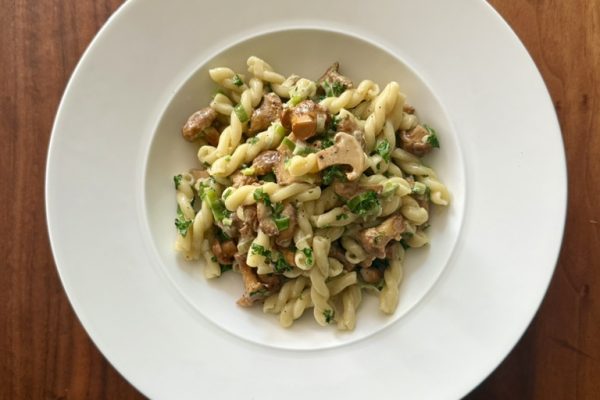

3 thoughts on “Pasta Carciofi, Funghi e Patate”